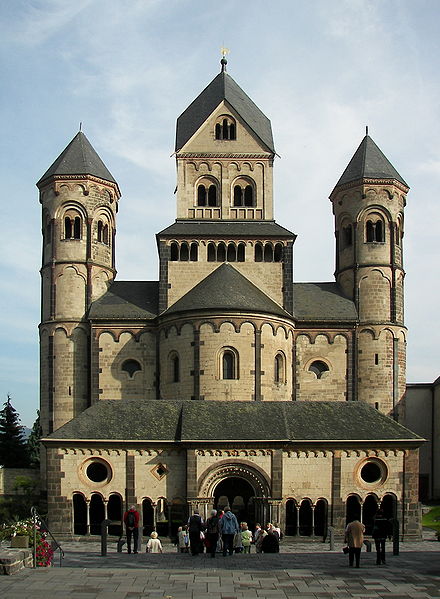settings
In Search of Lost Time [volume 1] vocabulary
12 architecture terms
help & settings
[x]
-
Romanesque
-
► definition
Definition:Somewhat resembling the Roman; -- applied sometimes to the debased style of the later Roman Empire, but especially to the more developed architecture prevailing from the 8th century to the 12th.text from Wiktionary, licensed under Creative Commons - Attribution - Sharealikehttps://creativecommons.org/licenses/by-sa/3.0/' rel='noopener external ' target='_blank'>https://creativecommons.org/licenses/by-sa/3.0/---an architectural style of medieval Europe characterized by semi-circular arches. There is no consensus for the beginning date of the Romanesque style, with proposals ranging from the 6th to the 11th century, this later date being the most commonly held. In the 12th century it developed into the Gothic style, marked by pointed arches. Examples of Romanesque architecture can be found across the continent, making it the first pan-European architectural style since Imperial Roman architecture. The Romanesque style in England is traditionally referred to as Norman architecture.Combining features of ancient Roman and Byzantine buildings and other local traditions, Romanesque architecture is known by its massive quality, thick walls, round arches, sturdy pillars, barrel vaults, large towers and decorative arcading. Each building has clearly defined forms, frequently of very regular, symmetrical plan; the overall appearance is one of simplicity when compared with the Gothic buildings that were to follow. The style can be identified right across Europe, despite regional characteristics and different materials.Many castles were built during this period, but they are greatly outnumbered by churches.text from Wikipedia, licensed under Creative Commons - Attribution - Sharealikehttps://creativecommons.org/licenses/by-sa/3.0/' rel='noopener external ' target='_blank'>https://creativecommons.org/licenses/by-sa/3.0/
 photo 1: Maria Laach Abbey (Germany) By Nikanos, CC BY-SA 2.5, https://commons.wikimedia.org/w/index.php?curid=1414981photo 2: Basilica di San Giovanni (Rome) By Joonas Lyytinen - Own work, CC BY 2.5, https://commons.wikimedia.org/w/index.php?curid=824116
photo 1: Maria Laach Abbey (Germany) By Nikanos, CC BY-SA 2.5, https://commons.wikimedia.org/w/index.php?curid=1414981photo 2: Basilica di San Giovanni (Rome) By Joonas Lyytinen - Own work, CC BY 2.5, https://commons.wikimedia.org/w/index.php?curid=824116
► uses
Uses:
Looked at in one way each breadth stands alone, the bloated curves and flourishes—a kind of "debased Romanesque" with delirium tremens—go waddling up and down in isolated columns of fatuity.
---
Most of the buildings are red brick too; some have arched doorways, a Romanesque effect, from the nineteenth century.
Margaret Atwood. The Handmaid's Tale (1986)
---
The church at Balbec, built in the twelfth and thirteenth centuries, and still half romanesque, is perhaps the most curious example to be found of our Norman gothic, and so exceptional that one is tempted to describe it as Persian in its inspiration."
Marcel Proust. In Search of Lost Time [volume 1]

